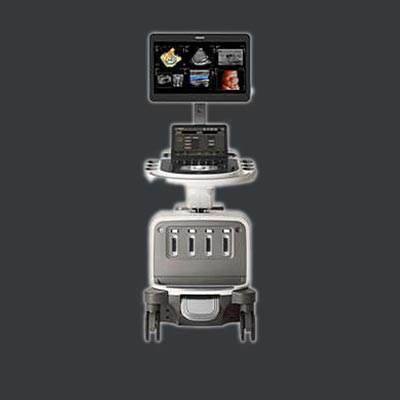Ultrasonography, commonly known as ultrasound, is a medical imaging technique that utilizes high-frequency sound waves to generate real-time images of the internal structures of the body. This non-invasive and radiation-free method has become an indispensable tool in medical diagnostics. In this comprehensive guide, we will delve into the intricacies of ultrasonography, exploring how it performs, its diverse applications, and the myriad advantages it offers in the field of healthcare.
What is Ultrasonography?
Ultrasonography is a medical imaging modality that relies on the principles of sound wave propagation to visualize structures within the body. Unlike X-rays, which use ionizing radiation, ultrasound employs high-frequency sound waves that are beyond the range of human hearing. These waves bounce off internal organs and tissues, creating echoes that are then translated into detailed images by a computer.
How Does Ultrasonography Perform?
Transducer and Sound Waves
The process begins with a transducer, a handheld device that emits and receives ultrasound waves. The transducer is placed on the skin over the area of interest. It sends out pulses of sound waves that penetrate the body.

Echo Reception
As the sound waves encounter different tissues and structures, they reflect back to the transducer at varying speeds. The transducer detects these echoes, and the information is sent to a computer.
Image Formation
The computer processes the received echoes in real-time, creating dynamic images displayed on a monitor. The resulting ultrasound images provide valuable insights into the structure, size, and movement of internal organs.
Uses of Ultrasonography
Obstetrics and Gynecology
Ultrasonography plays a crucial role in monitoring fetal development during pregnancy. It helps assess the health of the fetus, identify potential abnormalities, and determine the baby's gender.
Abdominal Imaging
The technique is widely used to examine abdominal organs such as the liver, kidneys, pancreas, and gallbladder. It aids in diagnosing conditions like gallstones, liver diseases, and kidney abnormalities.
Cardiac Imaging
Echocardiography, a specialized form of ultrasonography, is employed to evaluate the structure and function of the heart. It provides valuable information about heart valves, blood flow, and overall cardiac performance.
Musculoskeletal Applications
Ultrasonography is utilized to assess musculoskeletal conditions, including joint inflammation, tendon injuries, and soft tissue abnormalities. It aids in guiding injections and interventions for precise targeting.
Breast Imaging
In breast health, ultrasound complements mammography by helping to differentiate between cysts and solid masses. It is a valuable tool for further evaluation when mammograms indicate abnormalities.
Advantages of Ultrasonography
Non-Invasiveness
Ultrasonography is non-invasive, making it safer than procedures involving ionizing radiation. It poses no risk of exposure to harmful X-rays, making it suitable for frequent use, especially in prenatal care.
Real-Time Imaging
One of its key advantages is the ability to provide real-time imaging, allowing healthcare professionals to observe organ function and movement dynamically. This aids in accurate diagnosis and treatment planning.
No Radiation Exposure
Unlike X-ray and CT scans, ultrasonography does not involve ionizing radiation. This makes it a preferred choice, especially for pregnant women and individuals who require repeated imaging.
Portability
Ultrasonography equipment is generally more portable than other imaging devices, allowing for bedside examinations and point-of-care diagnostics. This enhances accessibility and convenience in various healthcare settings.
Cost-Effectiveness
In comparison to some imaging modalities, ultrasonography is often more cost-effective. This affordability contributes to its widespread use, particularly in resource-limited healthcare environments.
ultrasonography stands as a versatile and invaluable tool in the realm of medical diagnostics. Its non-invasive nature, real-time imaging capabilities, and diverse applications make it an indispensable asset for healthcare professionals. As technology continues to advance, ultrasonography is likely to play an even more significant role in enhancing the precision and efficacy of medical diagnoses and interventions. Stay informed about the evolving landscape of medical imaging to leverage the full potential of ultrasonography in modern healthcare.
